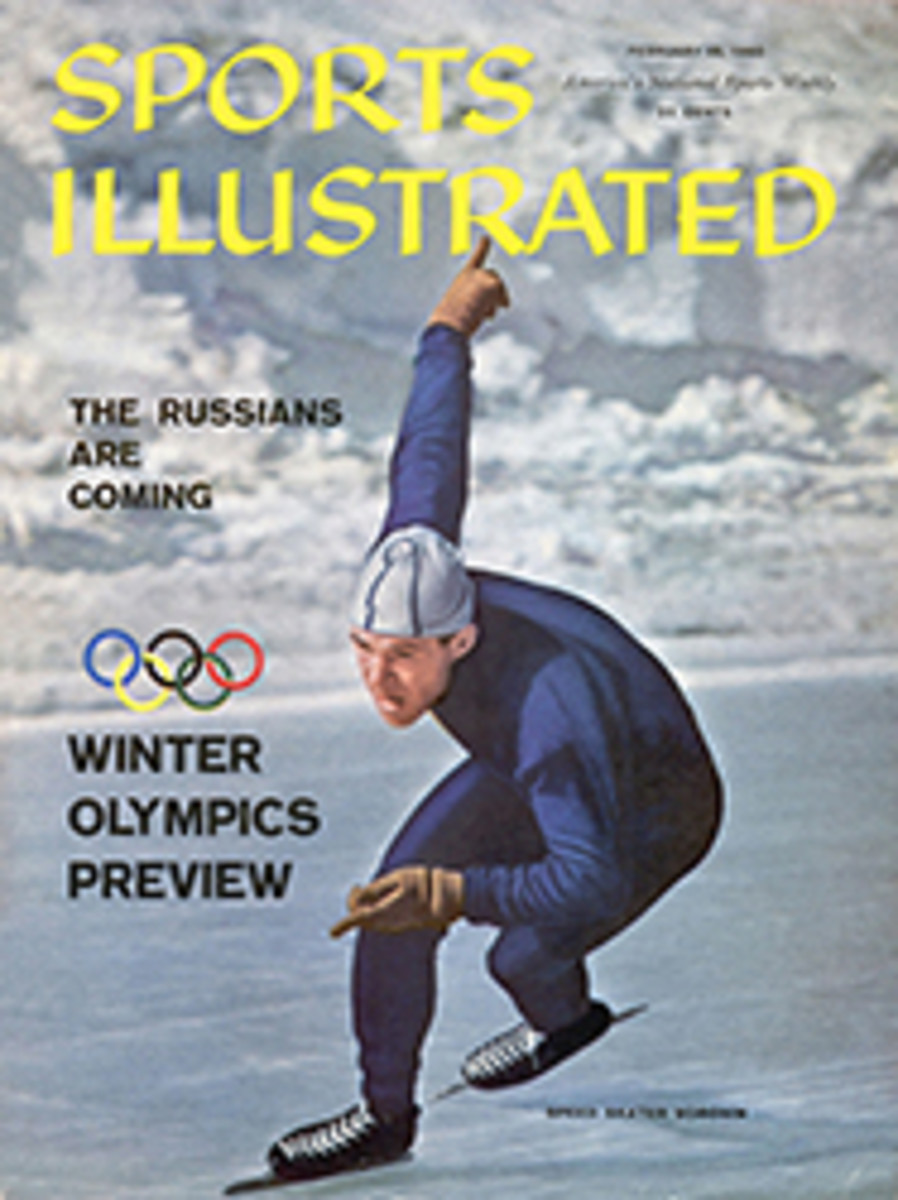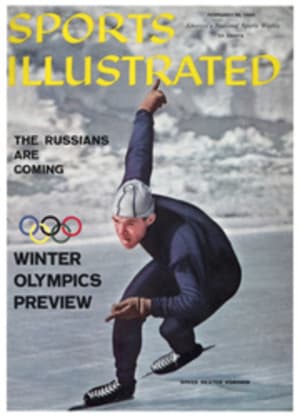
The long drift to Acapulco
Ocean racing is a matter of compensations. Sometimes it is mostly good, and the compensation is victory. Sometimes it is mostly bad, and the real joy is solely that it finally ends. These thoughts were very much in my mind a fortnight ago as I prepared to join the crew of Nam Sang for my second Pacific race, the run from San Diego to Acapulco. In prospect, this coastwise slant to the south and east seemed likely to be as different from the sleigh ride to Honolulu as two phases of the same sport could be. The latter was a westward passage across open ocean, riding the steady winds of a relatively fixed high-pressure system. There are no such probabilities on the San Diego-Acapulco run. Anything in the way of wind—or lack of it—may be expected. The meteorologists predicted that we might at first get strong northerlies, from cold fronts originating in the Aleutian weather factory. But they quickly warned that for most of the distance it might be necessary to depend on thermal currents, winds which flow from the cold land to warm ocean by night, reversing during the day as the sun heats the shore.
The start was inauspicious. At the signal, hardly a vessel had more than bare steerageway. But by nightfall we were running down the coast with a breeze that struck in before sunset. I began my log with a feeling of confidence:
Monday, January 18
All day we have slid along under spinnaker to a light sea breeze, the wind shifting westward as the sun rose. Our night ride close to shore paid off. Nam Sang is now second in the fleet, astern only of Pursuit, one of the two class M sloops sailing the race. At 83 feet over-all, they are the closest things afloat to the giant J boats which formerly raced for the America's Cup. It is a foregone conclusion one of them will be first to finish, and despite huge handicaps they should be hard to beat even on corrected time if anticipated conditions prevail. In size, the 37-vessel fleet ranges from the 89-foot ketch Novia Del Mar to the 32-foot sloop Risque. Some of our Honolulu Race competitors are back, such as Escapade, Kamalii, Kialoa and Patronilla, but added are such good boats as Legend, Transpac winner in 1957, and Carousel, a 40-foot sloop which has been first in both the Acapulco and Ensenada events.
Already I can see that luck will play a large part in determining the outcome. Various boats are certain to get slants of breeze while others sit becalmed, waiting for their numbers to come up in the great celestial lottery, to take off with a rattle of winch pawls and a ringing of verbal bells as the crew optimistically exults: "This time, this is it."
Wednesday, January 20
Two things landsmen do not realize about sailing long races are that light, fluky conditions are harder on a crew than heavy winds, as there are more changes of sails and trim, and that after a while sleepiness can become a form of torture. It seems that for countless hours I have not been off my feet during watches on deck, and now tiredness is compounded by spending part of my watch below helping Bruce Hutchins resew the clew of the drifter, pulled out as this breeze freshened. My judgment as watch captain was at fault; I was reluctant to slow the boat by changing to a less efficient headsail, and the light nylon let go along the stitching about two feet ahead of the cringle. As chief architect of the disaster it was up to me to do my best at repair, although by temperament and experience I am better at disintegrating than creating sails. Credit for returning the drifter to service must go to Bruce Hutchins and to Frank Atkinson, our capable rigger and masthead man.
Thursday, January 21
After a day's run of 136 miles Nam Sang is off Cape San Lazaro, more than halfway down the peninsula of Baja California. The watch has shed flannels and soaks up the sun clad in shorts. We have ghosted past giant turtles sunning on the surface and seen the dark triangles of manta rays beneath. Water snakes wriggle away from the bow, huge schools of porpoises give spectacular exhibitions of steeplechase jumping, a big hammerhead shark nosed the remains of breakfast, and Bill Crawford and I watched a marlin make an even dozen leaps clear of the water, falling back each time with a tremendous flurry. It is a wild and intriguing part of the world, one of the last areas near population centers to remain untouched, perfect for cruising.
But it is giving us a hard time racing. Watchmate Ben Collins agrees he has never experienced such frustration trying to keep a boat moving. No wind seems to last. By the time sails and trim are adjusted to one set of conditions, these no longer exist. Even the thermal winds seem to be off duty; we have moved mostly at night and remain always on the port tack.
Saturday, January 23
Nam Sang lies off another cape of Baja California, this one San Lucas, the extreme southern tip of the peninsula. Offshore steep pinnacles cluster like hungry teeth, a graveyard of ships through the centuries. I am afraid it will be a graveyard of our racing hopes too, as we have come to a halt. Yesterday, by the calculation of the race committee member accompanying the fleet, Nam Sang stood first in class and second over-all to Carousel, leader of class C. Pursuit was only 35 miles ahead, while Barlovenlo was in sight. With almost exactly half the race sailed, we seemed in wonderful shape. At 7 o'clock in the morning, Navigator Carl Stewart told me to note the bearing in the log when Cape San Lucas came abeam, a matter of a few hours as we slid along at almost seven knots. But it didn't come abeam on that watch. Nor the next, nor the next. Through the day and night we bobbed to the gentlest of northwest swells meeting a short easterly sea coming from the Gulf of California, canceling the benefit of occasional cat's-paws of breeze. We suffered in the immemorial manner of ocean racers gone flat. And at noon today by radio, we learned the sad truth: Pursuit is now 170 miles ahead, while Santana, Kialoa and Carousel have gained more than a degree of latitude to be barely out of sight over the horizon astern. Poor Nam Sang has had the double whammy: not just the accordion effect of the fleet closing the gap from behind, but the added blow of having the leader jet out in front.
Monday, January 25
Have been moving since midnight, first picking up under the drifter to 1.5 knots, then setting the light spinnaker and edging gradually to four knots. Since dawn we have had a bit fresher slant from the northeast, a cooler wind spilling out of the Gulf of California. This afternoon it pushed us along at a solid 6.5 on the Kenyon. It is an unspeakable relief to be moving again, but the damage has been done. On yesterday's report we have slumped to fourth in class and 19th in fleet. Pursuit is now a fantastic 311 miles ahead, and even our erstwhile playmate Barlovenlo is 187 miles over the horizon. Meanwhile, we are running neck and neck with a new group, yesterday morning sighting the sails of Santana, Kialoa and Carousel. As the latter are of class B and C respectively, they are sailing a splendid race.
Under the circumstances, I greatly admire our skipper, Bob Robbs. He is a keen competitor yet maintains unruffled good humor despite our bad break, and Nam Sang remains a happy ship. Meanwhile, I confess second thoughts about the use of radio, a major point of difference between East and West Coast yachting. Corrected time standings for each boat in class and fleet are broadcast daily. Personally, I prefer learning the truth after finishing from a bulletin board adjacent to the host club bar, where painkilling remedies may be applied without delay.
Tuesday, January 26
Believe it or not, but this afternoon we are having a ride reminiscent of the Molokai channel. For the first time in the passage there is enough wind to raise the spinnaker pole the full extent of the track, and now the huge nylon bubble rides high and round, its red top a wonderful contrast to the blue sky above. Roll and go, a glorious sail, always the compensation in ocean racing. As Carl Stewart said after lunch, "When you're moving it's like Benzedrine; you don't even want to sleep." The day's run was 174 miles, our best, and we have covered a total distance of 1,082 miles since the start. During the past 24 hours we even improved our standing in class and fleet, moving up to fourth and 14th. Carousel has worked back to first on corrected time, despite the fact that Pursuit is now within 200 miles of the finish.
Wednesday, January 27
At 7 a.m. we were 15 miles from Point San Telmo, 236 miles from Acapulco, and just to give us a bit of everything we now have the wind dead on the nose. During the night the breeze chopped ahead almost eight points to put us aback. We managed to trim to the new beam slant, but at 0300 another shift made it necessary for the starboard watch to change from spinnaker to drifter. Crazy!
Thursday, January 28
During the 24 hours ending at noon Nam Sang made good only 42 miles, the worst day's run in my ocean-racing experience. Pursuit finished at 4:02 yesterday afternoon, with the tailender Sea Song II only 873 miles out of San Diego—a spread of almost 600 miles in the fleet, practically the entire distance of the Bermuda Race. Already Bob has decreed water rationing for Nam Sang. Shades of windless wind ships of yore!
Friday, January 29
We are truly on the homestretch, 70 miles from Acapulco, with the wind steadily freshening on the quarter. Again the spinnaker rides high and round while tumbling water flows astern. We parallel an unbroken sand beach barely outside the line of surf, looking through binoculars at miles of waving palms.
It is dark when we cross the finish line, and Nam Sang receives a Latin welcome to remember: guns booming from the hill, rockets flaring across the sky, a cluster of escorting spectator boats sounding horns and sirens.
When Nam Sang finished, third across the line, Santana, Kialoa and Carousel were not many miles behind. Pursuit and Barlovenlo were already at the dock. Gallantly Ash Bown and a crack crew of small-boat sailors strove to keep Carousel moving in a dying breeze, finally losing to Pursuit for first in fleet by one hour 45 minutes 5.4 seconds, although winning class C by a good margin. Pursuit, which never dropped below four knots behind Cape San Lucas, thus earned for Howard Ahmanson and his crew a clean sweep—first to finish, first class A, first over-all.
PHOTO
"PURSUIT'S" HOWARD AHMANSON SIPS FROM THE VICTORY BOWL WITH FRIENDS

